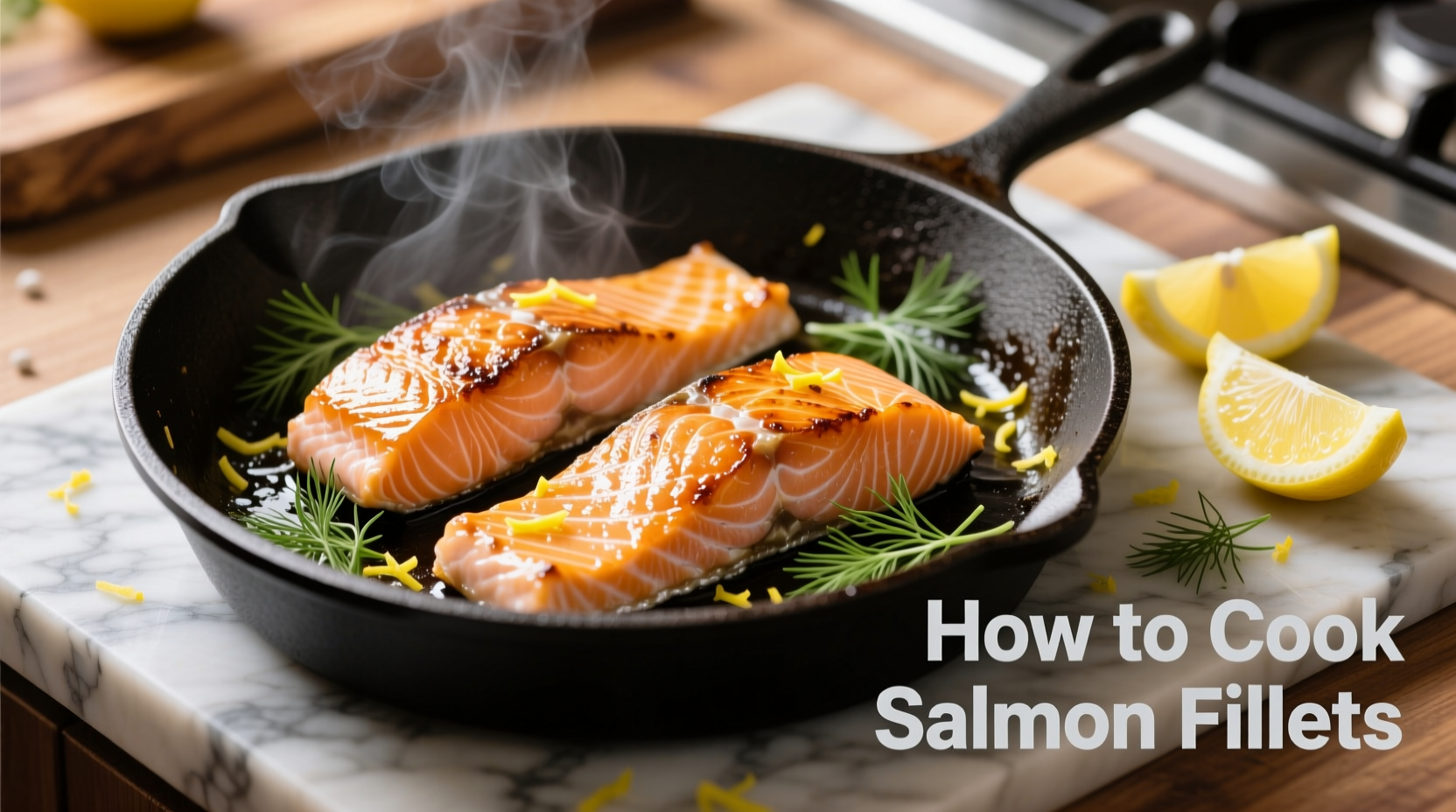Nothing ruins a beautiful piece of salmon faster than overcooking. Achieving restaurant-quality salmon fillets at home is simpler than you think when you understand the science behind the cooking process. This guide reveals four reliable methods to cook salmon fillets perfectly every time, with professional techniques adapted for home kitchens.
Why Temperature Control Matters for Salmon
Salmon's delicate texture requires precise temperature management. Unlike chicken or beef, salmon transitions from perfectly cooked to dry and chalky in just a few degrees. According to the USDA Food Safety and Inspection Service, fish should reach a minimum internal temperature of 145°F (63°C) or until the flesh is opaque and flakes easily. However, professional chefs typically remove salmon from heat at 125-130°F because carryover cooking raises the temperature during resting.
| Doneness Level | Internal Temperature | Texture Characteristics |
|---|---|---|
| Rare | 110-120°F (43-49°C) | Translucent, very soft, sushi-like |
| Medium Rare (Recommended) | 125-130°F (52-54°C) | Moist, flaky, slightly translucent center |
| Medium | 135-140°F (57-60°C) | Firm but still moist, opaque throughout |
| Well Done | 145°F+ (63°C+) | Dry, chalky, difficult to flake |
Preparing Salmon for Success
Proper preparation sets the stage for perfect results:
- Dry the surface thoroughly with paper towels - moisture prevents proper searing
- Bring to room temperature for 15-20 minutes before cooking for even cooking
- Season just before cooking - salt draws out moisture if applied too early
- Score the skin with shallow diagonal cuts to prevent curling during cooking
Four Foolproof Cooking Methods
Pan-Seared Salmon (Best for Crispy Skin)
This restaurant-favorite method creates beautifully crisp skin with tender flesh. Heat 1 tablespoon of high-smoke point oil (avocado or grapeseed) in a heavy skillet over medium-high heat until shimmering. Place salmon skin-side down, pressing gently with a spatula for 30 seconds to prevent curling. Cook undisturbed for 6-8 minutes until skin is golden and crispy. Flip and cook 2-4 minutes more until reaching your target temperature. For extra flavor, add butter, garlic, and herbs during the last two minutes of cooking.

Baked Salmon (Easiest Hands-Off Method)
Preheat oven to 400°F (200°C). Place seasoned salmon on a parchment-lined baking sheet. Bake for 10-12 minutes for 1-inch thick fillets. For a golden finish, switch to broil for the last 2 minutes. Baking works particularly well when cooking multiple portions or when preparing sheet pan dinners. The American Heart Association recommends baking as one of the healthiest cooking methods for fish, preserving omega-3 fatty acids better than high-heat methods.
Grilled Salmon (Summer Favorite)
Preheat grill to medium-high (375-400°F). Oil the grates thoroughly. Place salmon skin-side down at a 45° angle to the grates. Close lid and cook 6-8 minutes until skin releases easily. Flip carefully and cook 2-4 minutes more. For delicate fillets, use a grill basket or cedar planks to prevent sticking. The Monterey Bay Aquarium's Seafood Watch program notes that wild-caught Alaskan salmon is one of the most sustainable seafood choices when in season.
Poached Salmon (Most Gentle Method)
Combine 4 cups water, 1 cup white wine, 1 sliced lemon, 1 tablespoon black peppercorns, and fresh herbs in a skillet. Bring to 160°F (71°C) - below simmering point. Add salmon and maintain temperature for 8-10 minutes until done. Poaching preserves moisture exceptionally well and creates a flavorful base for salads or cold preparations.
Avoiding Common Salmon Mistakes
Even experienced cooks make these errors:
- Moving too soon - Let salmon release naturally from the cooking surface
- Overcrowding the pan - Cook in batches if necessary for proper searing
- Skipping the rest period - Rest 5 minutes after cooking for juices to redistribute
- Guessing doneness - Always use a digital thermometer for accuracy
Serving Your Perfectly Cooked Salmon
Pair your salmon with complementary flavors that enhance without overwhelming. Classic pairings include lemon-dill sauce, roasted asparagus, or a simple cucumber-dill salad. For wine pairings, a crisp Sauvignon Blanc or light Pinot Noir works beautifully. Remember that salmon continues cooking after removal from heat - this carryover cooking can raise the internal temperature by 5-10°F during the resting period.
Troubleshooting Guide
When things don't go as planned:
- Sticking to the pan? - Your pan wasn't hot enough or you moved it too soon
- Dry texture? - Overcooked by just a few degrees; use thermometer next time
- Skin not crispy? - Surface wasn't dry enough before cooking
- Uneven cooking? - Fillet wasn't brought to room temperature first











 浙公网安备
33010002000092号
浙公网安备
33010002000092号 浙B2-20120091-4
浙B2-20120091-4